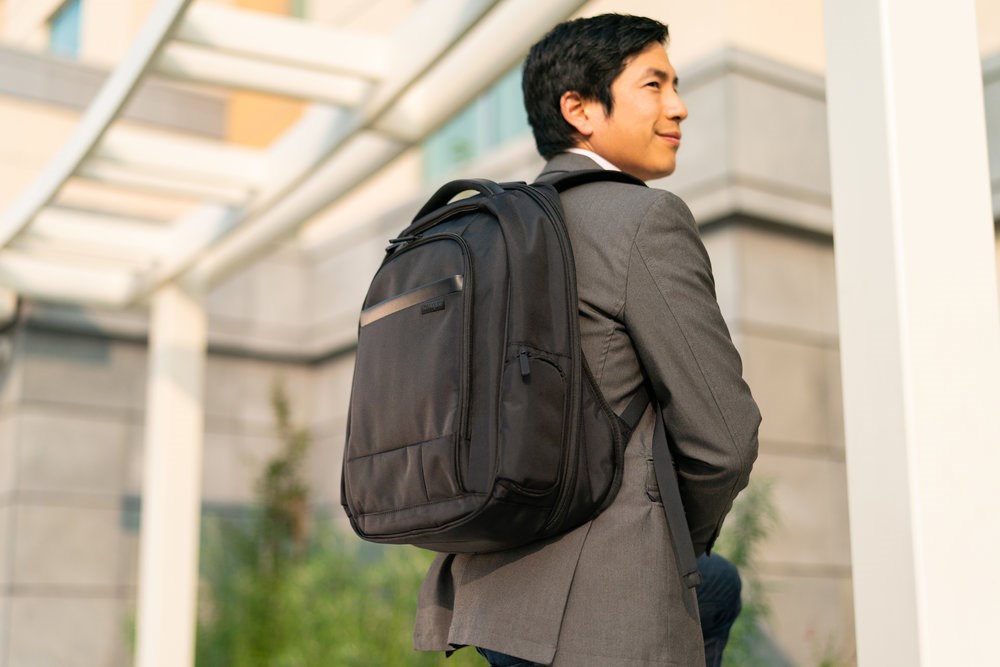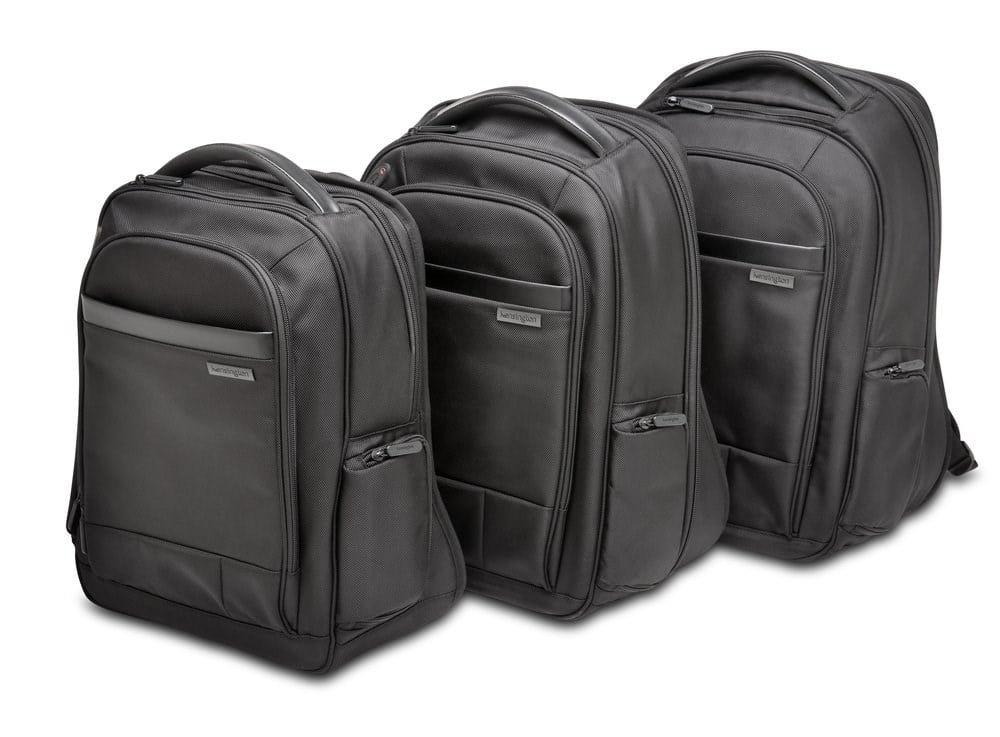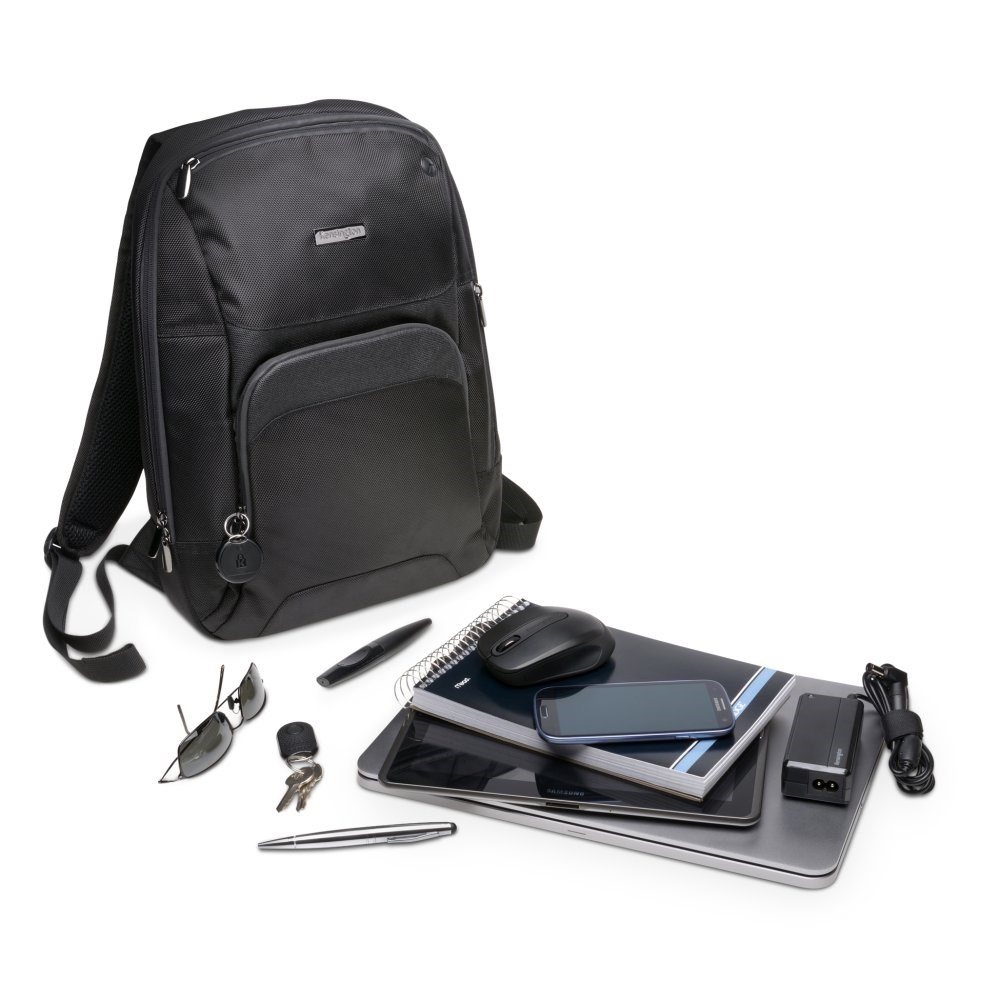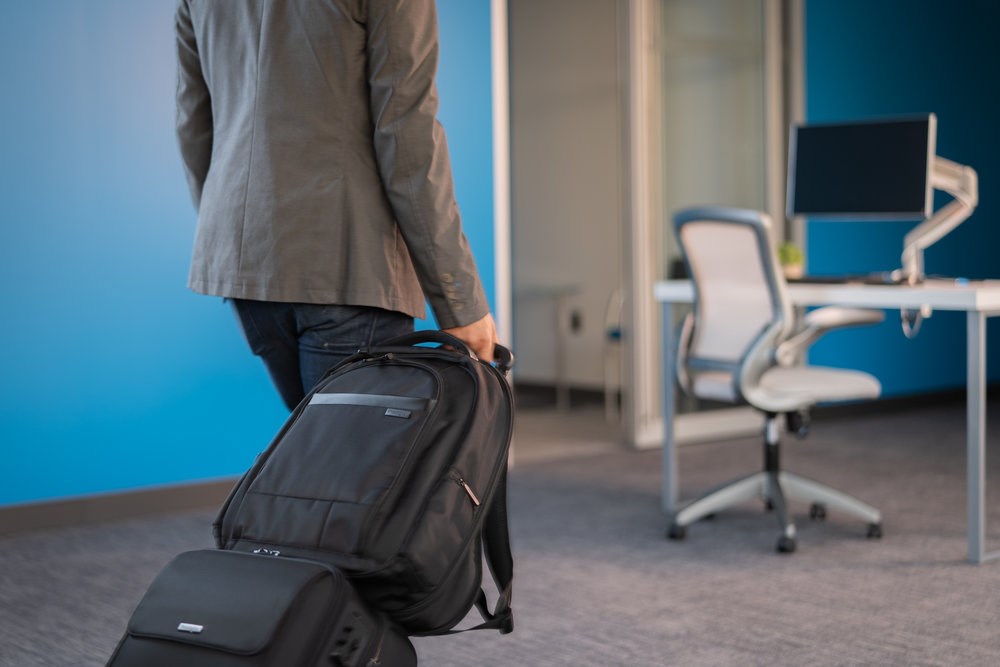
When we talk about upgrading our workstations, we tend to look at the same basic tech: our keyboard, mouse, and computer. What is typically overlooked is the single article of gear we rely upon daily to protect and secure all of this tech. That is: our backpack.
An ergonomically-designed backpack works with your body and is a tool that contributes to wellness in your day-to-day work. And from a functionality standpoint, a high-quality one simply makes one’s life easier. If you’ve been considering an upgrade, treat the following as your guide as you navigate the market to find the perfect fit.
Key: Finding a Bag That Fits Your Body

Anyone who has backpacked around the world will tell you that the most important element to success with your pack is achieving a snug fit. And though us business professionals won’t likely be toting our business laptop backpacks across European country, there is something to be learned from the professionals. You want to feel “one” with your bag.
A key measurement is needed to inform this snug fit: your torso length. This length defines the size of bag that is proportional to your body and thus comfortable to carry.
Measuring your torso length:
From a standing posture, tilt your head forward and find your C7 vertebra: the bony bump where your neck meets your shoulder slope. We’ll call this the ‘top’ of your torso length. Now put your hands on your hips and find the top of your hip bones--draw an imaginary line between them and note where this line hits your lumbar. This point, we’ll call, the ‘bottom’ of your torso length. Have a friend measure the distance between these two points to get your torso length. It is a useful measurement to have while on the market.
Now let’s talk comfort.
The first set of features to look for are thick, well-padded, adjustable straps. Narrow shoulder straps will dig into your shoulders and neck and restrict blood vessels and nerves (a sign of this is tingling, numbness, or weakness in the arms and hands). And adjustability is critical to finding the length that allows for your arms to move about freely once loaded up.
On this, windedness can also be a sign that you’re exceeding your body’s load capacity (which we talk about below in ‘loading tips’) -or- that weight isn’t being distributed appropriately across your body.
Which brings us to the next good feature: even distribution of weight. Regardless of the number and complexity of compartments, you want the bag’s weight to be evenly distributed across the body by design so one side of the body isn’t unfairly strained. This will save you energy, lend balance and stability, and prevent injuries and discomfort.
Relatedly, a pack made with lightweight material will serve you well in not adding unnecessarily to the weight of your load. If over-heating is a concern to you too—favor a pack that ventilates heat in the way our new Contour 2.0 line dissipates the heat that builds between your back and the backpack.

Now, the reason we want our bag to hug our body is so that it remains close to our center of gravity while in transit; we want walking to be just as natural loaded up. Here, a contoured, well-padded back that follows the curve of your spine is recommended. A pack that hangs loosely from your body will put undue stress on the shoulders and neck, offset your balance, and create an unnatural compression of the spine. Additionally, you’ll develop a bad habit of correcting this thrown balance through a ‘forward’ lean, that will lead to postural misalignment over time and injury.
If regular travel is expected of you and your new rucksack, ‘trolley pass through’ is a useful design to consider in the handle of your bag that allows for easier mobility.‘Trolley pass through’ is the technical description for a handle that allows your suitcase’s extension handle to pass through it in order for your bag to attach on top of your suitcase securely. If unfamiliar with the feature, take a look at the handle on our Contour 2.0 line for a visual. And look for a padded one, if you want to be able to carry your bag by this handle comfortably as desired.
A good seal of approval that assures the comfort of a product is ‘ergonomist-approved’.Think of an ergonomist as a professional who studies the interaction between humans and tech with the goal of greater comfort, efficiency, and productivity through good design; this crew really knows their stuff.
Key Specs: A Bag Fit for Travel and Mobile Working

Whether commuting daily, working remote part-time or taking regular business travel, all of us are on the go to some extent. When traveling with our most important gear, our main concern is almost always security, followed closely by comfort.
First and foremost, in this day and age, we highly recommend finding a product with an RFID pocket that secures your cards, passports, licenses, and other RFID-enabled cards. When traveling, the last thing you want to be blindsided by is identity theft. If you tend to carry cash as well, one or two hidden compartments is a good feature to seek out. Take our Triple Trek™ Ultrabook™ with hidden compartments built in for this very purpose, as an example.
Which brings us to the next important area of consideration: compartments. Picking a bag with the right number of compartments to fit your particular needs will make daily use easy and effortless. And it will allow you to designate a safe home for each of your items; organization goes in hand with security, here. So before beginning to shop around, you may want to take stock of your gear and decide what exact items you’ll carry regularly. In doing this, make sure to take note of your laptop’s dimensions and find a product with a laptop compartment sized to securely hold yours.

On this consideration, if taking your laptop out of your bag while going through TSA stresses you out to no end, make the ‘TSA-Friendly’ or ‘Check-Point Friendly’ guarantee a requirement. A check-point friendly bag unfolds in a way that physically exposes your device, so you don’t have to take it out of your bag at TSA, putting it at risk of damage and theft.
How to Gauge Durability
We put too much stock and invest too much energy into our devices to compromise on the durability of gear expected to protect it. We’ve got a few pointers here.
A pack with extra padding built in—surfacing all important compartments and the bottom—will protect your items in the case of being dropped. Water-resistant, weatherproof material is recommended if you want this bag to serve you through weather and storm. A material that classifies as ‘ballistic’ and ‘puncture-resistant’ guarantees extra durability.
Perhaps most importantly, a strong, lockable zipper is practically essential for peace of mind. The zipper tends to be an overlooked feature. Unfitting that it should be so because it’s virtually the doorway into the contents of your bag.
If traveling by foot at night is a consideration, reflective zippers are recommended to lend more visibility.
Loading & Adjusting Tips
Let’s switch gears into phase 2.
- Load heaviest items closest to the back. Well-designed products will support this in the thoughtful placement of compartments
- Arrange and secure your items within each home compartment. Your balance will be offset and your items will be subject to damage if they’re sliding around while you move
- Adjust your shoulder straps. Your bag should fit snugly to your body with its bottom resting comfortably in the contour of your back. It should not sway from side to side as you walk. We’re looking for stability so that the abdominal muscles are supporting the cargo weight. These are some of the strongest muscles in the body, and activating them correctly will contribute to proper postural alignment
- Always wear both shoulder straps. Wearing only one slung over a shoulder will cause curvature of the spine, pain, and discomfort
- Make sure the weight of your load is evenly distributed. You can test this by walking and shifting weight between each feet to check that mobility is just as easy
- Lighten the load. Less weight is always better, so carry only the essentials. As a rule of thumb, your backpack should weigh no more than 10-15% of your body weight
A great backpack is like a trusted companion that gives you the liberty of traveling comfortably and without worry over the security of your gear. If you’ve put up with an inadequate one for some time now, we encourage you to explore the market with criteria of what you want and to discover the kind of functionality that’s afforded through greater ergonomic design. We expect the tools we use to make our lives easier and contribute to our health; it’s about time we ask the same of the backpack we use every day.